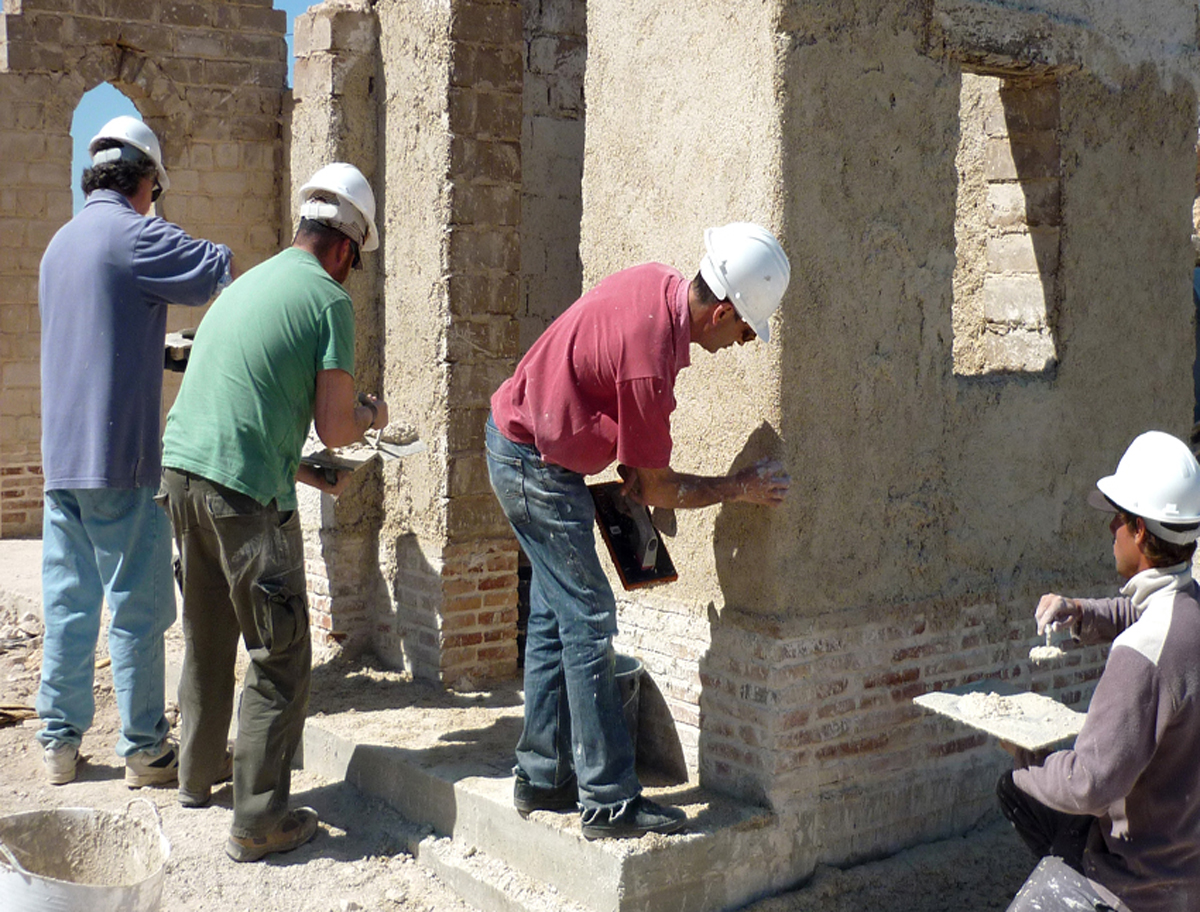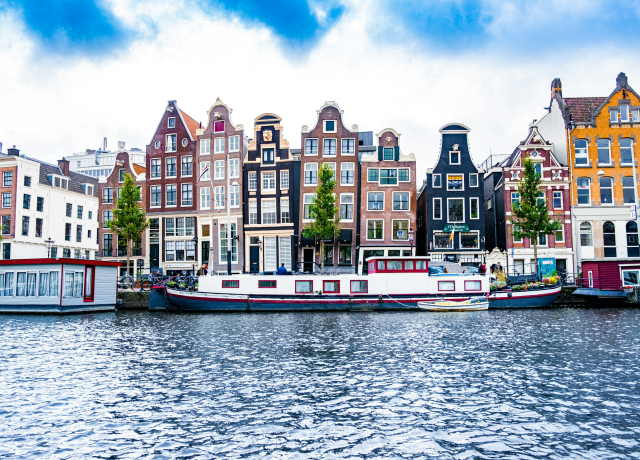European Heritage Days Article:
Sustainable Heritage: How Historic Architecture Inspires Green Building Practices
European Heritage Days Article:
Sustainable Heritage: How Historic Architecture Inspires Green Building Practices
Photo: Historic waterfront buildings in Amsterdam (credit, Tobias Kordt via Unsplash)
Alongside the 2025 brochure full of resources and ideas to help organisers plan Architectural Heritage events, here is a look at how this year’s theme can be used to highlight sustainability in an architectural context.
Look at traditional building materials and designs
Considering the sustainability of traditional materials used to construct buildings is an interesting angle for this year’s Architectural Heritage theme. Topics which could be explored might include looking at renewable materials which can be sustainably produced or biodegrade after use such as thatch for roofs or wood from responsibly grown trees, or how the durability of clay bricks or natural stone provides buildings with a long-life span. Working in collaboration with local geologists, historians and manufacturers, events might include making ‘family trees’ of materials used in historic buildings, perhaps with tours of local quarries or brick makers. Demonstrations of traditional techniques might also be an idea to explore both the construction materials and the intangible heritage of craftsmanship. For example, practical training about traditional render can be seen in this European Heritage Days Stories initiative which explores the ‘revitalization of the manufacturing tradition and uses of artisanal lime, and its relevance on European architectural heritage and for sustainable building’.
Highlight sustainable architectural projects
Walking tours around town centres and behind-the-scenes access to significant buildings are always popular at European Heritage Days, and these types of events are a great fit for this year’s theme. To highlight sustainability issues, specific ‘green architecture’ tours could focus on sustainable and eco-friendly architectural practices, showcasing the conservation of historic places as well as how modern design can incorporate new technologies alongside taking inspiration from traditional ideas. Creative initiatives in sustainable architectural development found across the continent could provide inspiration for these tours or form the basis for talks by experts such as architects and town planners. Examples of the types of projects which could be highlighted include how the ambition of Amsterdam in the Netherlands to be climate neutral by 2050 has led to a large-scale programme of retrofitting historic buildings with sustainable heating solutions. One innovative part of this is looking at how to convert the temperature of the city’s network of canals into energy via heat pump systems for the surrounding buildings, many of which date back to the 17th century. Energy-efficiency is also a key part of the planning strategy in the village of Langouët in France, where passive social houses built of wood and using solar energy are providing a pioneering example of the green transition. Another place establishing sustainable urban development solutions is the Nordhavn district of Copenhagen in Denmark, where transport is a key issue. The area’s concept of a ‘5-minute city’ takes inspiration from traditional urban design of the pre-car era with walkability a key aspect of planning, alongside prioritising routes for bikes and public transport.

Include buildings which highlight sustainability topics
Holding tours around buildings which generate or are powered by renewable energy such as wind or solar power, or which demonstrate other environmental considerations in their design, is a potential way to highlight issues about sustainability in relation to this year’s Architectural Heritage theme. One European Heritage Days Story example from Malta explains how the National Water Conservation Awareness Centre was built to provide a specific venue to explain sustainable water resources management, with the building itself having a low environmental impact and reduced water footprint. Highlighting sustainable resource management might also include looking at the recycling of building materials or use of reclaimed architectural salvage in restoration projects, while the architectural evolution of public transport networks is another topic which can be explored by opening the doors to historic transportation hubs such as train stations and ports.
Consider international goals and initiatives
This year’s brochure lists a number of resources, projects and organisations which can provide ideas for this year’s theme. Goal 11 of the United Nation’s 2030 Sustainable Development Goals which aims to “make cities inclusive, safe, resilient and sustainable” is particularly relevant. Events could be organised to demonstrate how local authorities and residents are helping to contribute to this, perhaps through themes of town planning, environmental requirements for new construction projects or community managed spaces.
Another international movement relevant to this year’s theme is the New European Bauhaus; an interdisciplinary policy and funding initiative which connects the European Green Deal to built environments and promotes sustainable, beautiful and inclusive solutions. One way to incorporate this into event programmes could be to organise a New European Bauhaus Green Design Challenge where participants could reimagine or redesign a local building, public space, or neighbourhood inspired by the architectural principles of the movement. Potential inspiration might come from the winners of The New European Bauhaus prizes such as a project to plant living roofs on existing buildings to boost biodiversity and contribute to passive cooling of urban areas in France, the renovation of historic buildings using products with a low or zero carbon footprint in Poland and the use of rammed earth as a natural and recyclable alternative to concrete in Austria.
There are lots of ways to include sustainability and green building practices within this year’s Architectural Heritage programme. As well as looking at this year’s brochure, further ideas about this can be found by looking back at the theme from 2022 which specifically focussed on Sustainable Heritage. In particular, the ‘built heritage’ section in that’s year’s brochure has some helpful ideas and is available here.
